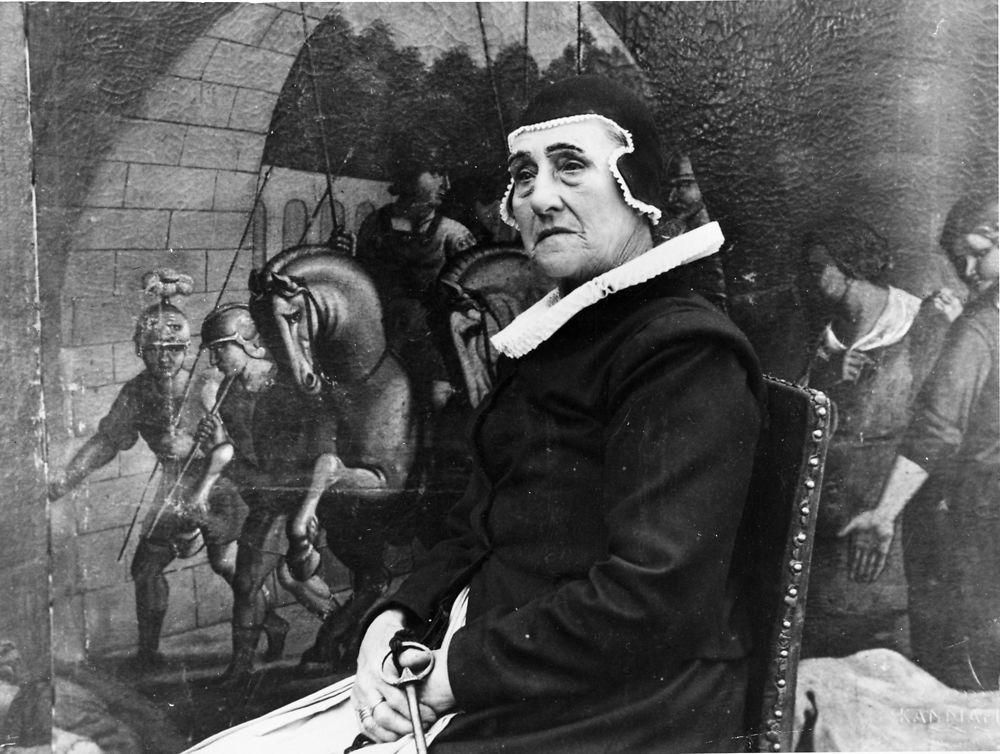The Parson’s Widow is set in 17th-century Norway. Söfren, a young theology candidate, is hoping to get a ministry in a small village, so he can marry his sweetheart, Mari. However, the position will not be his unless he marries his predecessor’s widow, the stern Margarete, who has already put three husbands in the grave. Mari moves in under the pretence of being Söfren’s sister, but Margarete repeatedly foils every attempt he makes to get Mari alone. One day he moves a ladder to trap Margarete in the attic, but instead Mari falls down and seriously injures herself. Söfren confesses all to Margarete who says that her story is the same: her fiancé also had to marry a parson’s widow and they had to wait five years for her to die. Shortly after, Margarete dies and Söfren and Mari can marry.
The film, a Swedish production, follows the recipe that had made international hits of several films by Victor Sjöström and Mauritz Stiller: it is set in the past, based on a literary source by a well-known writer and exploits a backdrop of majestic Nordic landscapes, while the characters are not just heroes or villains but people struggling with difficult moral or psychological quandaries.
The film impressed people in its day because of its chamber-play-like concentration on the three main characters and its authentic period depiction: costumes, props and customs are reproduced with great care for folkloric detail, and Dreyer shot the whole film in real 17th-century houses at Maihaugen, an open-air museum near Lillehammer. Camera placement was complicated by the walls of the houses being immovable, while the possibility of placing the camera anywhere, all around the characters, was an advantage. In his following films, as well, Dreyer preferred to work in sets with four walls, allowing him to film his characters from all sides, and several scholars in recent years have taken an interest in the way Dreyer creates spatial cohesion in this film.
CASPER TYBJERG
| Production company | Svensk Filmindustri |
| Distributor | Svensk Filmindustri |
| Censorship classification | Allowed for all |
| Release date and place | 26.4.1921 / Palads First screening 4.10.1920 in Sweden: in Rivoli and Record in Stockholm, Cosmorama in Göteborg, Drott in Karlstad, Röda Kvärn in Kristianstad and Odéon in Helsingborg. In Norway the film premiered 25.10.1920 at Victoria and Westend Teatre in Olso. |
| Based on | The short story "Prestekonen" by Norwegian Kristofer Janson. The story is based on an actual fact. Around 1600 Margrete Pedersdatter of Tysnes survived three vicars. The short story was a part of the collection "Middelalderlige Bilder", released 1901. |
Directed by
| Carl Th. Dreyer | Director |
Screenplay
| Carl Th. Dreyer | Screenwriter |
Cinematography by
| George Schnéevoigt | Director of Photography |
Others
| Anders Sandvig | History Consultant |
Cast
| Hildur Carlberg | Margrethe Pedersdotter, the parson's widow |
| Einar Röd | Søfren, theology candidate |
| Greta Almroth | Kari, Søfren's fiancée |
| Olav Aukrust | Skinny theology candidate |
| Kurt Welin | Fat theology candidate |
| Mathilde Nielsen | Gunvor, maid in the parsonage |
| Emil Helsengreen | Steinar, groom in the parsonage |
| William Ivarson | Parson |
| Lorent Thyholt | Bellringer |
| Ivar Blekarstad | Farmer |
| Peter Kraabøl | Farmer |
| Olav Aasmundstad | |
| Anton Lie | |
| Einar Lunde | |
| Kristen Holbø |
